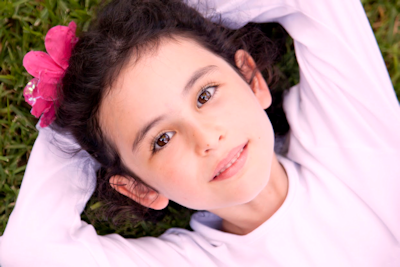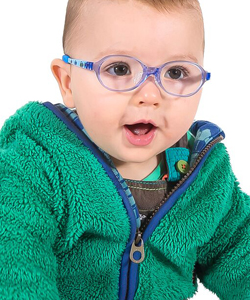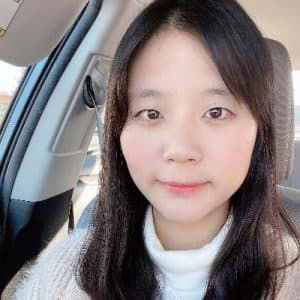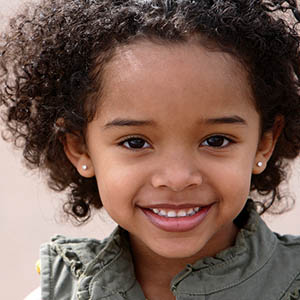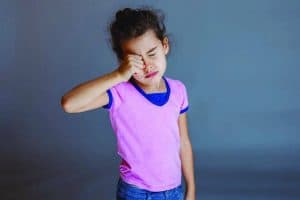Accommodative esotropia usually presents itself in children from age 2 and older.
The most prevalent type of childhood strabismus (eye turn) is accommodative esotropia. As with every strabismus, it results from a mismatch between stimuli that increase the need for fusion and factors that govern the quality of fusion.
Below are 3 case studies that highlight important aspects of clinical care of accommodative esotropia.
*Names have been changed for protection of privacy.
Case study #1: Bella, Age 5
Complaint
Turned eye and poor performance at school.
Findings/Diagnosis
Esotropia caused by long-sightedness.
Bella’s optical prescription was found to be R and L +4.00/-0.50×180. This is a very high level of long-sightedness.
She was diagnosed with accommodative esotropia.
Treatment
Bella was prescribed glasses with a prescription giving her 20/25 vision. After wearing the new glasses for five weeks, the large constant eye turn was reduced to a small eye turn, only she was reading.
This helped confirm that she had accommodative esotropia. She was advised to continue to wear her glasses continually.
One year after the initial presentation, Bella was able to achieve 20/20 vision in both eyes with her glasses.
Outcome
Bella’s academic performance significantly improved after she started wearing her eyeglasses.
Having clear and comfortable vision appears to have facilitated Bella’s reading, which is now fluent and enjoyable for her, and has improved her academic performance.
If your child is struggling in school, it could be their vision, contact an eye doctor near you who can evaluate your child’s vision.
SEE RELATED: What is Accommodative Esotropia?
Case study #2: Cynthia, Age 3
Complaint
Constant ‘inward turn’ of the right eye
Findings/Diagnosis
Accommodative esotropia with lazy eye (amblyopia).
Her prescription was found to be R +5.00/-1.00×180, L +4.00/-0.50×180, however her vision in the right eye was lower than the left, being 20/200 as compared to 20/40.
Cynthia had significant hypermetropia and a lazy eye.
She was prescribed lenses as the diagnosis was partial accommodative esotropia with amblyopia.
Treatment
After two months with corrective lenses, Cynthia’s vision in her left eye improved from 20/40 to 20/25.
Three months after wearing glasses, Cynthia returned. While her parents did not notice the eye turn as much, they did notice she was tired. Cynthia was instructed to wear her glasses while all the time wearing a patch over the left eye.
Another four weeks Cynthia’s vision acuity in her lazy eye, her right eye started to improve from 20/200 to 20/60.
Outcome
Cynthia’s parents felt that her eyes looked straight when she wore her glasses.
Cynthia needed to continue to wear glasses full-time, with patching of the left eye.
Over the course of five more monthly reviews, Cynthia continued to wear essentially the same lens correction. Her therapy for amblyopia was modified twice:
First, patching for two hours per day of the non-amblyopic eye to one hour of concentrated near work. Later, atropine drops were added to the therapy program of the non-amblyopic eye, as periodically changing therapy is useful.
At her last review her visual acuity in the right eye 20/25 and she started to see 3D. Due to treatment for lazy eye, gross stereopsis (3D) vision was slowly improving.
Case study #3: Wilson, age 4
Complaint
Presented ‘crossed-eyes’ that ‘swapped from right to left’.
Findings/Diagnosis
Reaction test showed a prescription of R +2.50 DS and L+2.50 DS, and that his visual acuities in both eyes were 20/30.
He was found to have significant hypermetropia (long-sighted).
Prescription lenses of +2.50 in both eyes were prescribed for full-time wear.
Treatment
Wilson returned two months later. His parents felt that the ‘eye turn’ had disappeared with the glasses but was unchanged without them.
Vision was 20/20 in both eyes, but his eye still turned when reading.
Bifocal glasses were prescribed, the diagnosis was unchanged. Wilson’s optical lenses were changed to +2.50 with a +2.00 near addition in a 35 mm D-segment bifocal.
Outcome
Wilson returned two months later. His parents were happy with the outcome, as they noticed his eyes did not turn with the glasses.
His vision was 20/20 in both eyes and Wilson was advised to continue with the same lenses with six-monthly reviews.
LEARN MORE: Guide To Eye Turns
If you notice your child has an eye turn, contact an eye doctor near you who can treat your accommodative esotropia.

